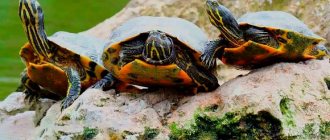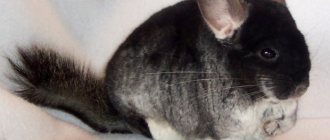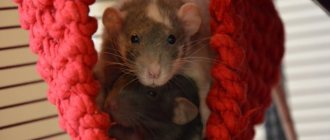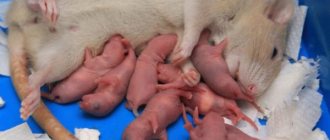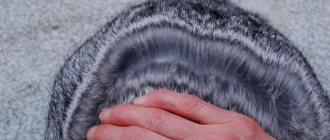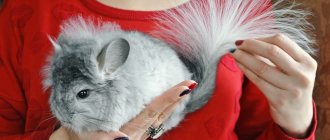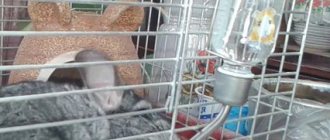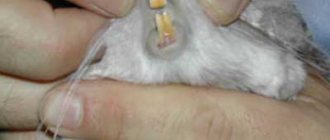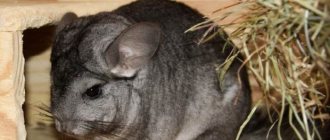The chinchilla is a small herbivorous rodent with thick and soft fur. It is not difficult to have such an animal as a pet. It is unpretentious in food and maintenance, and its life expectancy in captivity is on average 10-12 years. Exotic rodents can bring their owner not only positive emotions, but also a good income.
The value of chinchillas is due to their very thick and dense hair. The fur is so thick that it doesn’t even harbor parasites. Chinchillas do not shed, and their fur does not cause allergies. Therefore, its cost is much more expensive than the cost of arctic fox, mink or sable fur. The demand for items made from chinchilla fur is growing, while materials often have to be imported from abroad. Competition in the market of the Russian Federation and CIS countries is low, which significantly increases the chances of a successful business in raising and breeding these animals.
You can breed chinchillas at home for sale. Many people love these cute furry animals, but buying them at the bird market is dangerous. The cost of one individual fluctuates in a fairly wide range - from 1,000 rubles. up to 40,000 rubles, and sometimes higher. It all depends on the color, quality of fur, size or gender.
The most important thing about such a business idea is that there is no need to rent premises or hire workers. You can set up a mini-farm for growing chinchillas right at home.
Where to start breeding chinchillas as a business at home
In addition to the fact that you need to acquire at least a couple of individuals, you have to complete the following activities:
- Develop a business plan for raising chinchillas at home.
- Prepare a room intended for the farm.
- Purchase the necessary equipment: food, sawdust, cages, toys.
- Place animals on the farm and provide them with a comfortable stay.
- Think over legal ways to receive income from the sale of products: register a business, determine the appropriate tax regime, understand the reporting.
IMPORTANT
: For the cultivation and sale of this type of product, permission from regulatory authorities and licenses are not required.
You need to understand how to breed chinchillas at home. In 1 year, the female produces up to three litters. One litter can have 1-3 cubs. With relatively small capital investments, starting a business requires a large time investment. However, the return on investment is high.
How to open a chinchilla farm?
To implement a business idea, an entrepreneur must perform the following steps:
- Prepare a room for keeping animals. The cages in which rodents live are placed in 2 rows of 6 pieces. There can be 2 chinchillas in one house. The minimum area of the room should be 18 square meters. m;
- Purchase the necessary equipment. In addition to cages, breeding will require drinking bowls, feeders, toys, bathing containers and sand;
- Install heaters to maintain an optimal temperature of +20 C;
- Buy feed and hay for bedding.
There are additional requirements for keeping chinchillas. According to sanitary standards, the premises should be located away from residential buildings. Do not allow direct sunlight into the room. For lighting it is necessary to use lamps with a power of up to 60 W.
Chinchilla farm
Paperwork
At the initial stage, entrepreneurs can register the farm as a personal subsidiary plot. This will help avoid paying high taxes and reduce investment in starting a business. After production volumes increase, the enterprise must be transferred to individual entrepreneur status.
To carry out legal activities, you will need to obtain permission from the veterinary service.
Note! A license for breeding chinchillas and selling fur is not required
Purchasing animals
A key factor in business success is the purchase of breeding stock. To open a small farm, it is enough to purchase 10 females and 2 males. It is worth noting that males are valued especially highly, from 6,000 to 9,000 rubles. The animals live for about 15 years, while their reproductive capacity remains unchanged throughout their lives.
Note! It is worth buying your first animals from experienced breeders. They will tell the novice farmer about the nuances of growing chinchillas, and also select high-quality breeding material
When purchasing animals, you need to pay attention to the following features:
- The animal's fur should be well-groomed and uniform;
- Activity is a sign of a healthy rodent;
- No discharge from the eyes and nose.
If the purpose of the business is selling fur and breeding, it is better to buy chinchillas at the age of 7-8 months.
Feeding
Chinchillas are fed once a day. This is due to the fact that animals are nocturnal and sleep during the day. The main food is pelleted food, herbs, vegetables and fruits. In order to maintain immunity and compensate for the lack of sun and fresh air, the animals are given vitamin complexes. On average, one animal consumes about 50 grams of food per day.
Where to sell products?
The entrepreneur must analyze the chinchilla market in advance. Skins and breeding stock are usually sold online. To promote your business, you can create your own website or place advertising on trading platforms.
Note! Feedback from farmers suggests that it is more profitable to work directly with fur factories, without resorting to the help of intermediaries. Products can be sold at fairs and animal shows
Such events allow breeders to find new sales channels, share experiences with other farmers and purchase quality material for breeding
Products can be sold at fairs and animal shows. Such events allow breeders to find new sales channels, share experiences with other farmers and purchase quality material for breeding.
Chinchilla fur
Selection and preparation of premises
Despite the fact that chinchillas are extremely unpretentious, you should approach the choice of premises responsibly. A number of conditions must be met:
- One individual needs about 0.3 m2 of area;
- permissible room temperature – 18-20 degrees;
- air humidity should not exceed 60%;
- it is important to make sure there are no drafts;
- the room must be clean;
- there should be little light, rodents do not like bright rays;
- The level of noise and harsh sounds should be minimal.
Take care of regular cleaning and ventilation. The appearance of mold or mildew in the room is unacceptable. The best solution would be to fence off the chinchilla farm from other buildings. Remember, animals are very shy, especially during the mating period.
Description of the animals: external characteristics
These are herbivorous animals whose homeland is South America. They reach sexual maturity at 7-8 months of age. Pregnancy lasts for 3.5 months. Babies are born fully prepared for active development:
- with eyes open;
- with teeth;
- covered with wool.
At two months, puppies are already separated from their mother.
The animals have soft fur of different gray-blue colors, which does not harbor parasites, round ears and a long tail. Animals don't smell because they don't sweat. They live up to 20 years in captivity. The weight of an adult individual is from 600 to 700 g. Cubs at birth weigh 60-70 g. Chinchilla, the breeding of which does not require large investments and efforts on the part of the entrepreneur, can bear 2-3 litters per year with abundant feeding and proper maintenance of females, sale which will allow you to recoup all costs for the purchase of animals, materials for cages, food and bedding in the first 12 months. This is a nocturnal animal that does not make sounds.
Purchase of cages and equipment
Having prepared the room, proceed to purchasing a cage and related equipment. Avoid any wooden parts - rodents will quickly make short work of them. It is forbidden to paint the room, as animals cannot tolerate the smell of chemicals very well.
The optimal cage size can be considered 50/50/60 cm. You can purchase a larger enclosure - it all depends on how many individuals you plan to have. The main condition is about 30 cm2 per individual. Males and females can be housed in pairs or separately, it all depends on the method of reproduction and the nature of the pets. Chinchillas are very agile rodents, so the cage should have small cells so that they cannot get out of it. When choosing a cage, pay attention to its safety and ease of cleaning. Experienced breeders place 6 cells in 2 rows. With this arrangement, the required area will be about 18 m2.
You will need:
- Sippy cup. It is best to choose hanging drinking bowls with automatic water supply.
- Hopper type feeder.
- Bath for bathing with sand. It should be spacious enough with closed sides.
- Bed or house.
- A house for a female during childbirth.
- Tray at the bottom of the cage.
- Toys - running wheel, tunnels, balls.
- Trainers for teeth. These can be mineral stones or pumice.
Remember that pets need to jump and move a lot, so make sure that the house has various shelves and perches. The distances should not be large so that the animal does not damage its paw when landing.
Let's calculate costs wisely
Any business will be successful if the costs and expenses, the expected profit are calculated in advance in order to understand: is it profitable or not to breed chinchillas, will it be possible to recoup all the costs of organizing the business, and will there be an expected profit?
Before starting a business, we draw up a business plan for breeding chinchillas. We evaluate the physical and financial capabilities of the project
It is important to listen to the advice of experienced farmers. They recommend that beginners create a mini-farm for 20 families (each with a male and three females) - a total of 80 animals, and then increase business volumes
This will not require huge financial investments; it will not be difficult to find a room of 24 square meters. m.
As a guide to starting a business, you need to invest:
Features of choosing and purchasing breeding stock
Once you have prepared the room and cage, it is time to start purchasing livestock. For a home mini-farm, it is enough to purchase 2 males and 10 females. Such a set can produce 70-80 young animals in 1 year.
Many breeders and farms provide temporary males for mating - consider these options.
There is an opinion that chinchillas should be bred monogamously, i.e. form pairs and let them breed separately. This method has a number of advantages, but is more expensive.
Buy young animals only from large and trusted breeders. This way you will protect yourself from buying a sick animal. In addition, breeders can provide a guarantee and a breeding card.
Business registration
At the very beginning of your activity, you should not rush to register, because the business may not pay off at all, and you will have to pay taxes. The ideal form for such a mini-farm could be a private plot, but this is only if the entrepreneur owns at least 2 hectares. The advantages of this organizational form include the complete absence of taxes.
If production has already been established and the farm has begun to generate a stable income, then an individual entrepreneur should be registered so that the entrepreneur can report to the state about his activities and its profitability. Registration in this form will allow you to avoid bureaucratic red tape when selling fur.
In order to legalize an individual entrepreneur you must:
- An application from an entrepreneur with a request to register the activity in the organizational form of an individual entrepreneur;
- Russian passport and its copy;
- Duty payment receipt
With all these documents, the entrepreneur must come to the tax office himself and submit a package of documents for registration.
An entrepreneur engaged in chinchilla breeding should choose the unified agricultural tax or Unified Agricultural Tax as a tax system.
This system has a number of advantages:
- No VAT
- No need to pay for property and profit
- Tax rate is only 6% of net profit
Chinchilla breeding
The female is ready for reproduction at the age of 4-7 months, the male at 7-9 months. In breeding conditions, one female can bear offspring without harm to health for 8 years. An older female will also produce offspring, but the cubs will be weaker and sicker.
Mating usually occurs at night. If fertilization has occurred, you will find tufts of fur and small waxy flagellum in the cell. Next, the female will gain approximately 100g. every two weeks. A pregnant female should be given more vitamins. The gestation period is 104-115 days. A couple of weeks before giving birth, the female needs to equip a room with sawdust and block the road to the bathing bowl. Monitor the behavior of the male; if he interferes, he should be isolated.
Childbirth usually takes place in the morning and no human intervention is required. When breeding polygamously, the male should be isolated from the female and the young for a couple of weeks. With the monogamous method, the male can be left in the cage. However, remember that immediately after giving birth, the male will try to cover the female again. One female can become pregnant up to 3 times a year, so make sure that her health is not compromised.
Young animals weigh from 30 to 70 g. Newborn babies are able to move independently. Milk feeding lasts up to 60 days, after which the young animals can be weaned from their mother. If the female does not have milk, the babies are transferred to one who has recently whelped, or are transferred to artificial feeding.
Pair formation
Puberty in chinchillas occurs in females by 6 months, in males by 7 months.
It is at this age that the reproductive system matures and animals can be distinguished by gender characteristics. In a male, there is a distance of several millimeters between the anus and the penis, but in a female, there is no gap between the vagina and the anus.
Chinchillas are polygamous animals and one male can cover three or four females. When forming pairs, the female is placed next to the male. Let's consider the difficult moment of forming a pair, because in severe cases rodents can seriously injure each other. What do we have to do:
- We place the pair in cages next door for a couple of days;
- Next, we place the animals in a small carrying cage for several hours;
- At this time, we prepare the cage for mutual living, change the filler and carry out general cleaning;
- We launch the first male to prepare and mark the territory;
- And last we launch the female.
This scheme will help avoid conflict situations.
Care and maintenance of chinchillas at home
The chinchilla is unpretentious and does not require careful care. It is enough to clean the cage daily and ensure the availability of fresh water and food. The bedding in the cage should be changed once a week. Once every six months it is worth checking the cage for integrity and disinfecting it. Wet cleaning of the premises is recommended once a month.
You can buy food in specialized stores or prepare it yourself by mixing different types of grains. In addition to cereals, chinchillas love hay and dry dandelion leaves. In summer, you can add fresh grass to your diet. In winter, animals are given carrots and apple pieces. Feeding occurs once a day in the evenings. For 1 animal there is up to 50g. stern. If there is a lack of sunlight, add liquid vitamin D to the food.
Tips from experienced owners
- Buy animals for breeding only from trusted places to be sure that the pets are healthy.
- Ensure the correct temperature and humidity in the room.
- Feed granules daily, as well as apples, raisins and dried fruits; pamper your pets once a day, 1 piece (optional).
- Special sand - zeolite or volcanic mixture, does not spoil the animal's fur, but only cleans it. You should not replace it with regular sand.
- A female at the age of 6-7 months can give birth to offspring. And pregnancy lasts 100-110 days.
A healthy female, in theory, can give birth for 5-7 years, but after this, problems may begin not only with childbirth, but also with implantation. On average, a healthy individual can live 10-15 years.
Sale of chinchillas, markets for products
The best option for home farms is the sale of live animals. Your clients can be individuals, stores or wholesale buyers.
Sales can be divided into the following categories:
- Realization of marriage. Culled chinchillas are a common occurrence on chinchilla farms. We are not talking about weak and sick animals. Rejects are those individuals that are not suitable for reproduction, or those whose fur turns out to be of poor quality. Clients in this case can be bird markets, pet stores or individuals who want to get an exotic pet. The cost of sales will depend on the average prices in your region. As a rule, it is low - from 2,000 to 5,000 rubles. for one animal.
- Sales of breeding animals. It is possible to raise chinchillas intended for breeding. In this case, the clients will be beginning breeders or farms that require breeding material. The cost of implementation here is much higher. It all depends on the breed, age, gender, external parameters.
- Fur sales. This type of implementation is preferable for large farms with a population of 300 males or more. It is the fur of male chinchillas that is considered to be of higher quality and is used in the production of various products. Clients are large fur studios in big cities. Cost – from 7,000 rubles.
- The most profitable market for chinchilla fur is auctions. The cost of one skin when traded under a hammer can reach tens of thousands of rubles. However, to get into this niche, as a rule, a home chinchilla farm is not enough. Larger production volumes and animals of rare and valuable breeds are required.
Things to consider
There are many sites on the Internet that offer to buy breeding animals and raise young animals. And then these same sellers promise to buy the animals. And the business plan convincingly proves the benefits. In reality, this is not the case at all. Let's look at the points:
Where can I get quality young stock? Breeding chinchillas are often offered for purchase at 7,000-8,000 thousand per animal. And there are also offers from 50 to 200 dollars. And here is another catch: high-quality breeding animals in Russia, Ukraine, Belarus are very difficult to find! The farms offer animals that are not much different from those sold in the markets for 1000 rubles: a light standard with a not very high-quality fur covering.
Dark standards are valued on the fur market, but the most important indicators of fur quality, its density and reaction to swelling, generally do not reach world standards and requirements! The difference is well understood by those breeders who have seen and held chinchillas from fur farms in Europe. Even in photos of domestic and foreign animals, the difference is obvious. Also, one of the ideas for a business could be keeping rabbits in a pit, as this can be seen in this video.
The best young chinchillas can be purchased in Ukraine or Belarus
Unjustified expectations of offspring. A chinchilla bears its offspring for 110 days. If you allow three pregnancies a year, the female’s body will become exhausted and will take six months to recover. This means that you don’t need to count on offspring more than twice a year. Wikipedia's promise of 3-5 puppies in a litter is also not entirely true. 4-5 cubs are rarely born, but in any case only 2-3 survive. The female has only two mammary glands; it is not always possible to feed even three. In practice, one female gives birth to 3-4 cubs in two litters per year. And these are the best indicators! But how long pregnancy lasts in rabbits and how many offspring can be obtained is outlined here.
About feed. Health and the ability to reproduce depend largely on feed. The feed offered by domestic producers is not of very high quality. Most often this is laboratory food for rabbits. You will have to supplement the diet with additives or buy imported feed.
It is best to buy food for chinchillas from abroad.
Implementation. We will not consider selling meat or selling animals to treasure hunters as our main income. Let's discuss the sale of fur. High-quality fur is very beautiful and very expensive, but not practical at all, even a rabbit wears it better! A chinchilla product will last 2-3 seasons. Very wealthy people can afford this luxury. But at a high price and demand is high. And the fur of domestic chinchillas absolutely does not reach the required standards!
This is all to say that when starting a business with chinchillas, you need to think carefully about slaughtering, dressing and selling the skins. You don’t need to expect that they will buy from you at the farm where you bought the young animals. If they buy it, it will only be once or twice, and then there will be reasons to refuse and the question of independent sale will arise.
You may also be interested in information about when you can breed rabbits and what kind of offspring you can get.
And these are not all the problems of the chinchilla business in Russia.
Possible risks
When planning this type of business, be sure to consider all possible risks. The biggest danger is the loss of animals. The disease of the entire livestock can lead to very unpleasant consequences. Despite the fact that chinchillas are not susceptible to diseases, they require careful care. When purchasing a new individual, monitor its behavior for a couple of days. Poor nutrition can lead to illness. Under no circumstances should you wash animals with water - this will make their fur worse.
Considering competition as a risk for doing business does not yet make much sense. Chinchilla breeding has not yet become widespread and this niche remains relatively free. However, it is still worth monitoring the state of the market in your region; perhaps there is a large breeder and seller of these animals very close by. Don't be afraid of competition, observe and learn from positive experiences.
conclusions
Chinchilla fur occupies a strong place in the global fur market. But this is not a mass product, but an expensive exclusive product. Accordingly, those who buy it are very demanding on quality. This means that if you are planning to open a chinchilla breeding farm, you must first of all purchase expensive, preferably imported, breeding specimens. You will receive your breeding herd no earlier than in 2–3 years.
In addition, you need to rely on your own slaughter and sanding. It is not profitable to trade young animals. Finding buyers for a really good product will not be difficult. It is more difficult to produce high-quality products: it is about 1,000 identical good skins.
In Russia, the number of “chinchilla” enthusiasts is increasing every year, but so far there are few farms with more than 300 chinchillas. Most of them make ends meet by selling breeding animals, feed and related materials. Wholesale resellers make money mainly from fur.
Kinds
Before you get a chinchilla at home, the first thing you need to do is decide on the breed, of which there are many. The most common are:
- Agouti;
- Foggy;
- Motley;
- White recessive and dominant;
- Pink and white;
- Beige breed and many others;
They all have some differences in their appearance, but they have one thing in common - the process of reproduction.
Signs of estrus in a female
To determine the signs of estrus in a female, for successful mating, the owner of the animals needs to pay attention to several signs.
Male behavior
The male begins to take an active interest in his partner. It makes rather loud sounds, indicating a call for mating, begins to wag its tail, clearing the floor beneath it, bites off the female’s fur and very often tries to jump on her.
Inspection of the female's loop
The female's genitals change their appearance. They swell, open, acquire a bright pink color, manifested by white discharge. At the same time, the nipples turn red and become larger.
